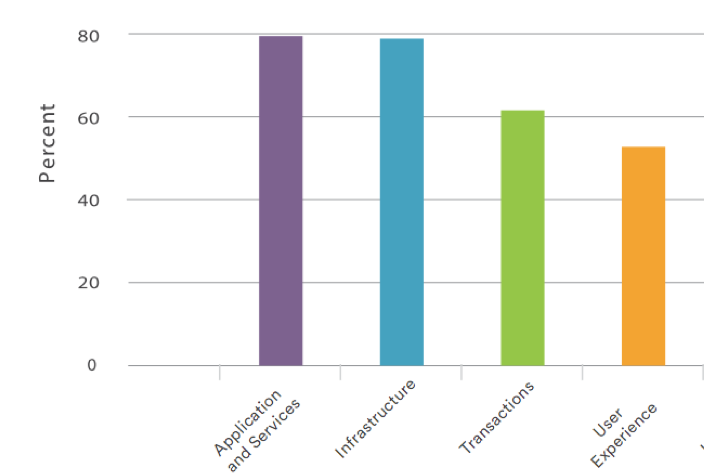DevOps has been a cultural force in the world of software and operations for 10 years. Like many grassroots movements, DevOps practices have been slowly but steadily gaining traction among operations and software teams in all sorts of industries. But where has 10 years of cultural change, infrastructure improvement, and tooling gotten us? To answer this question, we partnered up with xMatters, one of our strategic technology partners that integrates with our products to provide a collaboration layer for DevOps, to research the state of DevOps practices today.
Our research revealed a few key trends in the area of Culture, Monitoring, and Incident Management that shine a light on how companies are winning at DevOps, and what practices can be improved.
DevOps: it’s working (for those who do it)
In our survey, 41% of respondents reported doing DevOps. And what’s more, over 65% of that group said that their DevOps initiatives were producing the benefits they expected to see. Which is great news! These DevOps practitioners are experiencing a faster time to market, improved customer experiences, fewer customer-facing incidents, faster resolution times, and a rapid-fire pace of innovation. In fact, according to the 2016 Puppet State of DevOps report, high performers deploy 200 times more frequently than low performers.

But, not everybody is doing DevOps yet. 59% of respondents either didn’t know what it was, or weren’t sure if their companies were doing it (these companies were excluded from the rest of the survey questions). This tells us that in the industry there is quite a big gap between companies doing DevOps, and companies who still consider it a buzzword. The good news is: the 41% who do embrace and practice DevOps have a strong competitive advantage over their peers in the market.
Find out where your team is on their DevOps journey and how you can take the next steps towards DevOps bliss. Check out the Maturity Model today.
Culture: we’re sharing tools, but not knowledge
More than any other area we researched, companies have established strong DevOps cultures where boundaries are being removed, information is available, and tools are shared.
80% of companies reported that development and operations share at least some tools, which is the first step in establishing DevOps culture. Another good indication of cultural alignment: companies also share information generated from these tools, though often with limited access.

So while companies have lots of shiny tools they share, a key indicator of DevOps culture — knowledge sharing — is lacking. Only 17% of companies reported having open information available to cross-functional teams in dynamic formats like wikis and chat rooms, while the vast majority indicated that information is shared only when requested, and only in static formats.
Monitoring: tooling can’t solve everything
Companies are monitoring everything. Of the companies we surveyed, 75% reported monitoring infrastructure as well as applications and services, while 60% reported monitoring transactions and 51% user experience. And nearly 2/3 of respondents said that their monitoring solutions predict potential issues before users are affected.

But even with all the monitoring happening, 50% of these companies still report finding issues in production after code is released. So where’s the disconnect coming from? This could be due to misses in monitoring transactions and user experience, but also the fact that barely half of the companies surveyed practice automated testing during their QA and testing process.
We can all agree: monitoring is a good thing. But without advanced testing practices, companies will continue catching issues in production.
Incident Management: information overload
Incident Management can be seen as the true test of DevOps maturity. Are companies able to react to major issues in time? Do they have the right processes in place to communicate what needs to be done?
From our research, we learned that many companies have still not yet figured out how to manage incidents well. 50% of companies report having to wait for the operations center to declare a major incident. 43% use a manual process to keep customers and internal stakeholders up to date. And 34% say they experience delays in incident resolution while waiting on subject matter experts.
When a company’s servers are on fire, there is no time to waste. So what is holding these companies back? In our opinion, it’s information and process overload. While monitoring provides a boatload of data, understanding it and synthesizing it is what truly makes it actionable. And with companies waiting on the word of operations and subject matter experts, the lack of real-time information is making incident management a challenge.
So, DevOps is here to stay. And it is creating value for a lot of companies embracing its principles. But the real test of DevOps maturity this year will come in these three key areas: can companies make the most of their culture, monitoring services, and incident management methods to get even more value out of DevOps? Find out more in our downloadable report.

